In cooking and cosmetology, kernels of various varieties of walnuts are used - from the usual walnut to exotic macadamia. Both hazel and its fruits did not stand aside. What is special about common hazel and what is its difference from hazelnut?
Material Content:
Hazel: varieties description
Common hazel (hazel, fox, hollow, zalipuyna, arishina) - a shrub (less commonly a tree) with a branched base. Its average height is 1.5 - 4.5 m, less often there are specimens reaching 7.7 meters. The plant is considered monoecious, blooms from February to April, and in the southern regions - at the end of January.

Hazel is also called hazelnut, although the fruits of these trees are somewhat different in shape.
Hazelnuts and common hazel are almost the same thing, only hazel is a wild-growing shrub, and hazelnuts are its cultural equivalent.
In general, hazelnuts are considered a hazel hybrid, grown on the basis of mixing several species of this plant. For this reason, hazelnuts are larger and contain more protein and nutrients.
Hazel has more than 20 species, among which there are:
- common hazel;
- tree-like;
- Manchu
- variegated;
- large.
The latter species is also known as Lombard nut. The origins of this name are unknown, the botanists only agreed that this hazel was created by mixing several types of hazel, and the process was carried out repeatedly.
As for the cultural version of hazel - an ordinary hazelnut - the following varieties are known:
- Crimean nut;
- badem;
- Kerasund.
All of them differ in appearance, have different thicknesses of fruits. Moreover, the latter in their component composition are completely identical.
The life expectancy of hazelnuts can be up to 70 - 80 years. It is propagated by root babies, layering or seeds. Productivity of the plant can be from 0.5 to 2.5 tons per hectare of land.
Where does common hazel grow and what does it look like
Common hazel has green foliage. From below, the leaves are pubescent and have an oval or rounded shape with denticles along the edges. Young branches are gray and bare, older ones are yellowish-gray, have bristly hairs. With the help of male flowers, long scaly “catkins” appear, and the female flower is wrapped in a scaly kidney. Flowering usually occurs until the moment when the leaves of hazel blossom.

Although two ovules are almost always located in the ovary, usually only one grain develops. From the point of view of botany, the fruit of hazel is a drupe located in a leaf sheath, which has the shape of a bell (it is also called a plush or saucer).
Depending on the type of hazel, the fruits may have a cylindrical, round, ovoid or flattened shape. As they ripen, the nutshell becomes more and more brown. Ripe hazelnuts separate from the saucer and fall out of it.
Most often, where the common hazel grows, there is enough light, despite the fact that it lives in the forests. Walnut usually chooses the southern slopes, and in the lowlands, under abundant lighting, it grows so well and densely that it can even sharply reduce its fertility.
This plant is perfectly adjacent to oak and other species of deciduous trees. It grows in various soils, but chernozems are best suited for it. On swampy and sandy soils, the plant begins to bear fruit much later.
Useful properties of hazelnut
Like many other nuts, hazel and hazelnuts are extremely beneficial for the human body.
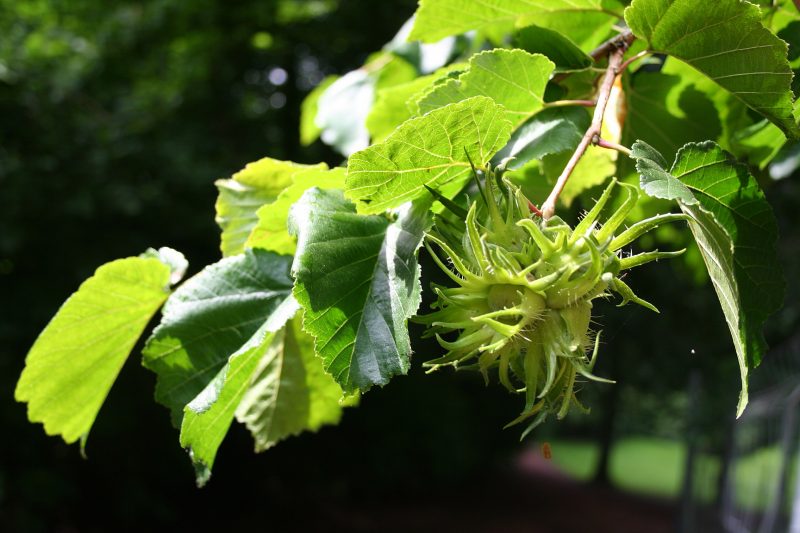
The use of nucleoli is due to their composition, which presents:
- fatty acids (it is because of them that nuts are considered high-calorie foods);
- vitamins A, B, E;
- minerals: chromium, potassium, zinc, selenium, etc .;
- proteins;
- amino acids.
Studies have shown that in some cases, the effects of hazel components are equal to the effects of certain medications.
The list of useful properties of hazelnuts includes:
- Improving the functioning of muscles, stimulating their growth.
- Strengthening the immune system.
- Calming effect on the nervous system, elimination of symptoms of insomnia, fatigue, anxiety.
- Normalization of the functioning of the digestive tract.
- Regulation of blood sugar.
- Improving the condition of the skin, nails and hair.
- Obstruction of the development of malignant tumors.
Among other things, it is believed that the nut has an anthelmintic effect, fights with roundworms and lamblia.
Hazelnuts are useful during pregnancy and lactation. The regular use of kernels supplies the fetus with the necessary substances, and also increases the quantity and quality of milk in nursing mothers.
Application in traditional medicine
Folk healers and healers highly value hazel leaves, especially young ones.
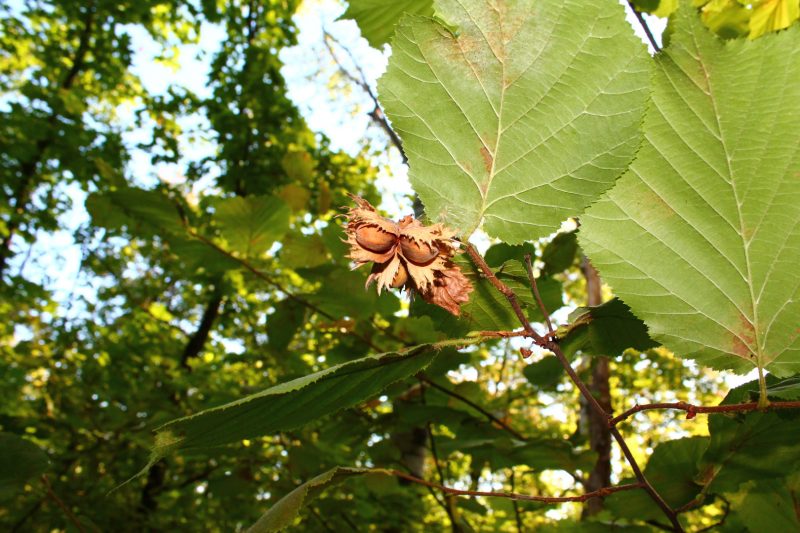
- Decoctions based on them help fight the pathologies of the kidneys and urinary system. Also, this tool is relevant as a sedative for nervous disorders. Take a decoction and as a restorative, tonic drink.
- No less useful are decoctions of pluses - “wrappers” of a young nut. They contribute to the improvement of the digestive tract, eliminating many problems.
- Popular among healers and tree bark, used in the treatment of many skin diseases.
- Boiled hazel root helps fight malaria.
Decoction of leaves and wood of common hazel
The drink is relevant in the presence of pathology of the cardiovascular system.
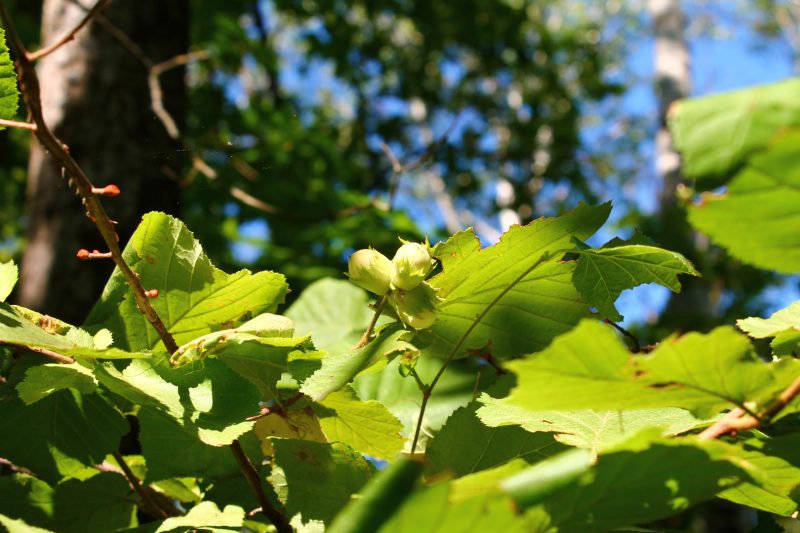
For cooking, take two tablespoons of dried leaves and small pieces of hazel wood. The raw materials are poured with a glass of boiling water, give time to cool and infuse. Express and take the infusion three times a day for half an hour before eating.
Hazelnut decoction to increase pressure
The remedy is ideal hypotonic.
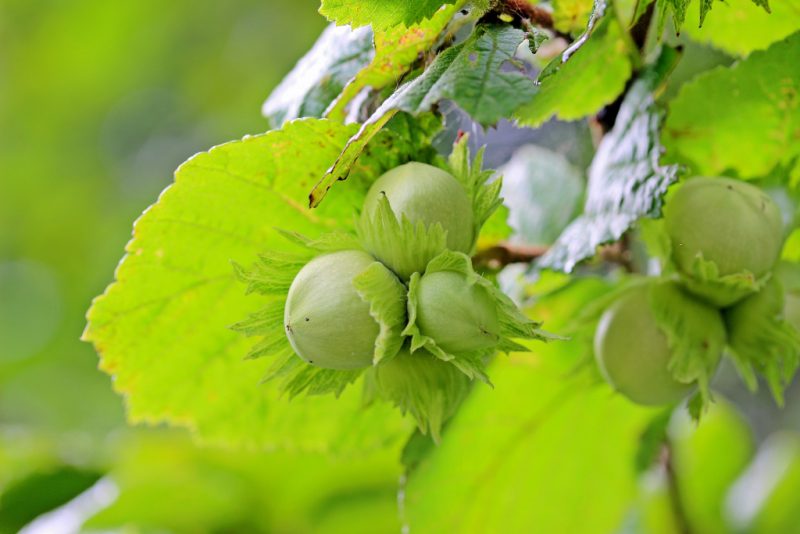
Two handfuls of hazelnut shells are poured with a glass of boiling water. The mixture is set aside for several hours to insist. After a while, the broth is decanted and taken twice a day to eliminate dizziness and general weakness.
How to use hazel in cosmetology
Close attention is paid not only to the kernel, but also to the oil created on the basis of this plant. It is easily absorbed by the human body, saturating it with vitamins and minerals. The antioxidant property of the product is used by cosmetologists to preserve the youthful skin of clients.

After squeezing the kernels, peanut butter retains its benefits for a long time and does not become rancid.
- A variety of creams, masks, shampoos and balms are made on the basis of hazelnut oil. This raw material has a strong cleansing effect, so it is perfect for teenage skin prone to problems in the form of acne, acne and acne.
- Ladies seeking an ideal figure love to rub hazelnut oil into their skin, as it helps to reduce stretch marks and cellulite.
- A mixture of hazelnut oil and egg white helps eliminate burns and ulcers on the skin.
Contraindications
The basic principle of eating hazel is moderation. It is enough to eat about 40 grams of nuts per day, and then they will be beneficial. Abuse threatens with headaches and dizziness.
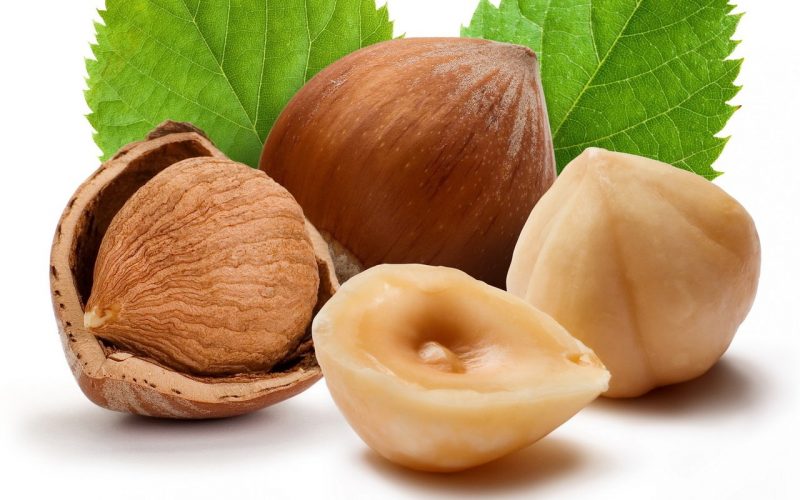
Limit the use of hazel fruit to obese people and liver diseases.
Attention! Expired or damaged kernels should not be taken as food - this may create an additional health hazard.
Hazel is a wild plant known for its beneficial properties. No less popular is its cultivated "brother" - hazelnuts. The kernels of nuts are used in food, medicinal decoctions are prepared from them and used as raw materials to create healthy oil.












